Radiohead: Sonic Innovators and Studio Revolutionaries
 Photo Credit: Radiohead Public Library
Photo Credit: Radiohead Public LibraryRadiohead, the iconic British rock band formed in Abingdon, Oxfordshire in 1985, has consistently pushed the boundaries of rock music and recording techniques throughout their career. Let’s explore Radiohead’s recording history, focusing on their producers, studios, innovative methods, and the accolades they’ve received along the way.
The Early Years (1993-1995)
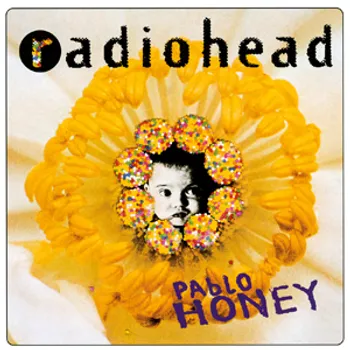
Pablo Honey (1993)
- Producers: Sean Slade, Paul Q. Kolderie
- Recorded: September-November 1992
- Location: Chipping Norton Recording Studios, Oxfordshire, UK
- Equipment: Analog recording on Studer A80 24-track tape machine, SSL 4000 G Series console
- Technique: Straightforward rock production, capturing the band’s live energy with minimal overdubs
- Awards: None for the album, but “Creep” was later inducted into the Grammy Hall of Fame in 2020
Radiohead’s debut album, “Pablo Honey,” emerged during the height of the grunge movement, a time when British guitar bands were struggling to make an impact. Recorded from September to November 1992 at Chipping Norton Recording Studios in Oxfordshire, the album was produced by Sean Slade and Paul Q. Kolderie, known for their work with American alternative rock bands.
The recording process was relatively straightforward, with the band aiming to capture their live energy on tape. They used analog recording techniques, utilizing a Studer A80 24-track tape machine and an SSL 4000 G Series console. The production focused on capturing the band’s raw sound, with minimal overdubs to maintain authenticity.
While “Pablo Honey” didn’t immediately set the world on fire, it did produce the hit single “Creep,” which became both a blessing and a curse for the band. The song’s success led to extensive touring, but also pigeonholed Radiohead as potential one-hit wonders, a label they would spend years shaking off.
“I was trying to write these really good pop songs, but they kept coming out twisted and weird.” - Thom Yorke on the songwriting process for Pablo Honey
The album’s reception was mixed, with some critics dismissing it as derivative of the grunge sound. However, tracks like “You” and “Blow Out” hinted at the more experimental direction the band would later take.

The Bends (1995)
- Producer: John Leckie
- Recorded: February-November 1994
- Location: RAK Studios, London; Abbey Road Studios, London
- Equipment: Mix of analog (Studer A800) and early digital recording (Sony PCM-3348), Neve VR console
- Technique: More layered guitar work, increased use of effects and atmospherics
- Awards:
- NME Awards for Best Album (1996)
- Q Awards for Best Album (1996)
“The Bends” marked a significant leap forward for Radiohead. Recorded from February to November 1994 at RAK Studios and Abbey Road Studios in London, the album was produced by John Leckie, known for his work with The Stone Roses and XTC.
The recording process was more complex than their debut, utilizing a mix of analog (Studer A800) and early digital recording (Sony PCM-3348) techniques, along with a Neve VR console. The band experimented with more layered guitar work and increased use of effects and atmospherics, particularly evident in tracks like “Street Spirit (Fade Out)” and “Fake Plastic Trees.”
One of the album’s innovations was Jonny Greenwood’s aggressive guitar playing, which became a signature sound. The use of effects pedals, particularly on tracks like “My Iron Lung,” helped create a more textured and atmospheric sound that set Radiohead apart from their Britpop contemporaries.
The recording wasn’t without its challenges. The band faced pressure to deliver a successful follow-up to “Pablo Honey,” and tensions sometimes ran high in the studio. However, these challenges ultimately pushed the band to create a more cohesive and ambitious album.
“We were like, ‘Let’s do it differently. Let’s do it our way.’” - Jonny Greenwood on the band’s approach to The Bends
“The Bends” was a critical success and helped establish Radiohead as one of the most promising bands of their generation. It set the stage for their future experimentation while still operating within a relatively conventional rock framework.
The OK Computer Era (1997-1999)
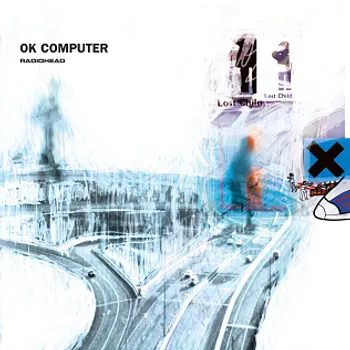
OK Computer (1997)
- Producers: Nigel Godrich, Radiohead
- Recorded: July 1996-March 1997
- Location: St. Catherine’s Court, Bath; Canned Applause, Didcot; Abbey Road Studios, London
- Equipment: ADAT digital recorders, Macintosh computer for Pro Tools editing, extensive use of guitar effects pedals
- Technique: Unconventional recording spaces, heavy use of guitar effects, experimental editing techniques
- Awards:
- Grammy Award for Best Alternative Music Album (1998)
- Ivor Novello Award for Best Album (1998)
- Q Awards for Best Album (1997)
- NME Awards for Best Album (1998)
“OK Computer” represented a quantum leap in Radiohead’s artistic development. Recorded from July 1996 to March 1997, primarily at St. Catherine’s Court, a historic mansion in Bath, the album was co-produced by Nigel Godrich, beginning a long-standing collaboration that would define Radiohead’s sound for years to come.
The recording process was highly unconventional. The band chose to record in the mansion to avoid the sterile environment of traditional studios. They set up in various rooms, including the ballroom, to achieve unique acoustics. This approach led to some of the album’s distinctive sounds, such as the ambient noise in “Exit Music (For a Film)” and the cavernous drums in “Lucky.”
Technologically, the band embraced digital recording more fully, using ADAT digital recorders and a Macintosh computer for Pro Tools editing. They also extensively used guitar effects pedals to create new sounds. One of the most innovative techniques was used on “Airbag,” where the drums were sampled and looped in Pro Tools, a novel approach for a rock band at the time.
The album’s themes of alienation in a tech-driven world were prescient, and its complex, layered sound was a departure from the Britpop that dominated the UK charts. This made the album’s enormous success all the more remarkable.
“I think we had the confidence to be more experimental and try different things. We weren’t afraid to fail.” - Ed O’Brien on the recording of OK Computer
While the recording process was generally smooth, the band did face some challenges. The pressure to follow up “The Bends” was intense, and there were moments of creative block. The song “No Surprises” reportedly took over 100 takes to get right.
“OK Computer” was a critical and commercial triumph, winning the Grammy for Best Alternative Music Album and being hailed as one of the greatest albums of all time. It set a new standard for what rock music could be in the late 20th century.
The Kid A / Amnesiac Sessions (2000-2001)
- Producers: Nigel Godrich, Radiohead
- Recorded: January 1999-April 2000
- Location: Guillaume Tell Studios, Paris; Medley Studios, Copenhagen; various locations in Gloucestershire, UK
- Equipment: Extensive use of synthesizers (including Ondes Martenot), samplers (Akai S3000), and Pro Tools
- Technique: Heavy electronic manipulation, sampling, and deconstruction of traditional rock instruments
- Awards: Kid A
- Grammy Award for Best Alternative Music Album (2001)
- Mercury Prize (shortlisted)
- Awards: Amnesiac
- Grammy Award for Best Alternative Music Album (2002)
- Grammy Award for Best Recording Package (2002)
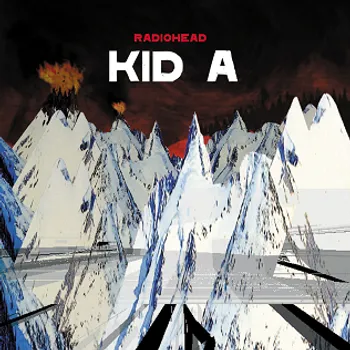

Kid A (2000) and Amnesiac (2001)
Following the massive success of “OK Computer,” Radiohead took a radical turn with “Kid A” and its sister album “Amnesiac.” Recorded from January 1999 to April 2000 across various studios in Paris, Copenhagen, and Gloucestershire, these albums marked a dramatic departure from conventional rock music.
The recording process was characterized by experimentation and deconstruction. The band extensively used synthesizers (including the Ondes Martenot), samplers (Akai S3000), and Pro Tools to create new sounds. Traditional rock instruments were often recorded and then sampled and manipulated beyond recognition.
One of the most innovative aspects of these sessions was the band’s approach to songwriting. Rather than starting with guitar or piano, many tracks began as electronic experiments. “Everything in Its Right Place,” for example, started with Thom Yorke using a Prophet-5 synthesizer, while his vocals were later processed through a Kaoss Pad.
The sessions were not without challenges. The pressure to follow “OK Computer” led to creative paralysis at times, and the band’s new direction caused internal tensions. Thom Yorke, in particular, struggled with writer’s block and the weight of expectations.
“I find it difficult to think of the path we’ve chosen as ‘music.’ It’s more about sounds and their effects on people. Some people call that music, but others just see it as noise.” - Thom Yorke on Kid A
Despite (or perhaps because of) its challenging nature, “Kid A” was a commercial and critical success, topping charts worldwide and winning the Grammy for Best Alternative Music Album. “Amnesiac,” released the following year, was similarly well-received and showcased the depth of material from these groundbreaking sessions.
The Return to “Rock” (2003-2007)

Hail to the Thief (2003)
- Producers: Nigel Godrich, Radiohead
- Recorded: September-October 2002
- Location: Ocean Way Recording, Los Angeles
- Equipment: Blend of analog and digital recording, guitar pedals, synthesizers, Pro Tools
- Technique: Live band recording combined with electronic elements
- Awards:
- Grammy Award for Best Alternative Music Album (2004)
- NME Awards for Best Album (2004)
“Hail to the Thief” saw Radiohead incorporating more traditional rock elements back into their sound while retaining their experimental edge. Recorded in just two weeks during September and October 2002 at Ocean Way Recording in Los Angeles, the album aimed to capture a more immediate, live feel.
The band used a blend of analog and digital recording techniques, guitar pedals, synthesizers, and Pro Tools. Most tracks were recorded in under a day to capture spontaneity, with the band performing together in the studio. This approach was a deliberate contrast to the meticulous construction of “Kid A” and “Amnesiac.”
Innovations on this album included the use of rhythm programming alongside live drums, creating a hybrid feel on tracks like “2 + 2 = 5” and “There There.” The band also experimented with different guitar tunings and effects to create unique textures.
One challenge the band faced was balancing their experimental tendencies with a desire to create more direct, accessible music. This tension is evident throughout the album, which oscillates between relatively straightforward rock songs and more abstract electronic pieces.
“We wanted to do something that was more immediate, more direct.” - Colin Greenwood on the approach to Hail to the Thief
While some critics felt the album was overlong, it was generally well-received and continued Radiohead’s streak of Grammy nominations for Best Alternative Music Album.

In Rainbows (2007)
- Producers: Nigel Godrich, Radiohead
- Recorded: February 2005-June 2007
- Location: Various locations in England, including Tottenham House in Wiltshire
- Equipment: Mix of analog and digital recording, increased use of string arrangements
- Technique: Lengthy gestation period, focus on organic sounds and live performance
- Awards:
- Grammy Award for Best Alternative Music Album (2009)
- Grammy Award for Best Boxed or Special Limited Edition Package (2009)
“In Rainbows” was recorded over a protracted period from February 2005 to June 2007 in various locations across England, including Tottenham House in Wiltshire. The album is notable not just for its music but also for its innovative “pay what you want” digital release strategy.
The recording process was lengthy and at times challenging. The band took a break from recording in 2006 to tour, which helped reinvigorate their approach to the material. They used a mix of analog and digital recording techniques and increased their use of string arrangements.
One of the album’s innovations was its warm, organic sound, achieved through a combination of vintage equipment and modern production techniques. The band also experimented with unusual recording methods, such as Jonny Greenwood’s use of a modular synthesizer to process Phil Selway’s drums on “15 Step.”
A notable aspect of “In Rainbows” was the inclusion of several long-gestating songs. “Nude,” for example, had been in the band’s live repertoire since the mid-90s but only found its definitive form during these sessions. This showcased the band’s willingness to revisit and refine ideas over extended periods.
“The way we released In Rainbows was a statement of faith. We were placing our trust in the public - we were asking people to place a value on art.” - Thom Yorke on the pay-what-you-want release model
The album’s release strategy was groundbreaking, challenging traditional music industry models and sparking debates about the value of music in the digital age. Musically, “In Rainbows” was hailed as a triumph, winning the Grammy for Best Alternative Music Album and being widely regarded as one of the band’s finest works.
The Digital Age (2011-2016)
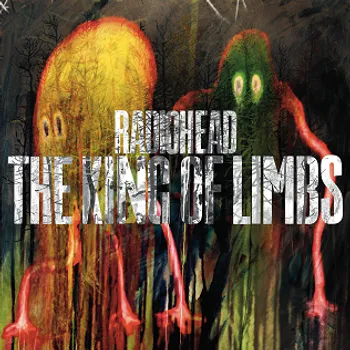
The King of Limbs (2011)
- Producers: Nigel Godrich, Radiohead
- Recorded: May 2009-January 2011
- Location: Tottenham Court House, Wiltshire; Batsford Park, Gloucestershire; Radiohead’s studio in Oxford
- Equipment: Heavy use of sampling and looping software, particularly Ableton Live
- Technique: Songs built from loops and samples, often of the band’s own playing
- Awards:
- Grammy Award nomination for Best Alternative Music Album (2012)
“The King of Limbs” saw Radiohead fully embracing digital production techniques and rhythmic experimentation. Recorded from May 2009 to January 2011 in various locations including Tottenham Court House in Wiltshire and Radiohead’s own studio in Oxford, this album marked another significant shift in the band’s sound.
The recording process was heavily centered around sampling and looping, with the band making extensive use of software like Ableton Live. Many songs were built from the ground up using loops and samples, often of the band’s own playing. This approach is exemplified in the track “Bloom,” which started as a loop of piano chords that were then sampled and rearranged.
One of the most innovative aspects of the album was its focus on rhythm and groove. The band, particularly Philip Selway and Colin Greenwood, created complex, interlocking rhythms that formed the backbone of many tracks. This was complemented by Jonny Greenwood’s intricate guitar work and Thom Yorke’s more impressionistic vocal approach.
The album also saw the band experimenting with different release formats. They initially released it as a digital download, followed by a unique “newspaper album” physical release. This continued their tradition of challenging conventional music industry practices.
However, the album’s short length and abstract nature led to mixed reactions from fans and critics. Some praised its adventurous spirit, while others found it less accessible than previous works.
“It’s about the interaction between humans and technology. We’re not trying to be difficult or willfully obscure. We’re just trying to do something different.” - Thom Yorke on The King of Limbs
Despite the mixed reception, the album showcased Radiohead’s continued willingness to push their sound into new territories, particularly in terms of rhythm and production techniques.
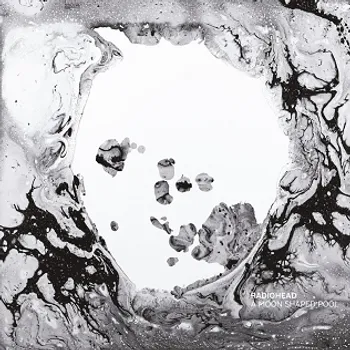
A Moon Shaped Pool (2016)
- Producers: Nigel Godrich, Radiohead
- Recorded: September 2014-December 2015
- Location: La Fabrique Studio, Saint-Rémy-de-Provence, France
- Equipment: Blend of analog and digital recording, extensive use of orchestral arrangements
- Technique: Integration of orchestral elements, focus on texture and atmosphere
- Awards:
- Grammy Award nomination for Best Alternative Music Album (2017)
- Mercury Prize (shortlisted)
Radiohead’s ninth studio album, “A Moon Shaped Pool,” was recorded from September 2014 to December 2015, primarily at La Fabrique Studio in Saint-Rémy-de-Provence, France. This album features some of their most lush and orchestral work to date, marking yet another evolution in their sound.
The recording process saw the band blend analog and digital techniques, with a particular focus on integrating orchestral elements. Jonny Greenwood, who had by this time established himself as a respected film composer, arranged strings for several tracks, which were recorded with a 55-piece orchestra at RAK Studios in London.
One of the album’s most innovative aspects was its use of texture and atmosphere to create emotional resonance. Tracks like “Daydreaming” and “The Numbers” showcase a more patient, expansive approach to composition, allowing sounds to breathe and evolve over time.
The album also saw the band revisiting and reimagining older material. “True Love Waits,” a song that had been part of Radiohead’s live repertoire for over two decades, finally found its definitive studio version on this album. This willingness to reconsider and refine ideas over extended periods is a hallmark of Radiohead’s approach to their craft.
“We’re not the same people we were two years ago. We’ve changed, and our music has to reflect that.” - Jonny Greenwood on the evolution of their sound
While the recording process was generally smooth, the band did face the challenge of integrating their various musical interests – from electronic experimentation to orchestral arrangements – into a cohesive whole. The result is an album that feels both familiar and new, showcasing Radiohead’s ability to evolve while maintaining their distinctive voice.
“A Moon Shaped Pool” was widely acclaimed upon release, with many critics praising its emotional depth and musical sophistication. It earned the band another Grammy nomination for Best Alternative Music Album and was shortlisted for the Mercury Prize.
Other Notable Awards
Throughout their career, Radiohead has received numerous other accolades:
- Inducted into the Rock and Roll Hall of Fame in 2019
- NME Awards Godlike Genius Award (2012)
- Q Awards Lifetime Achievement Award (2019)
- Ivor Novello Awards for Lifetime Achievement (2008)
Famous Mixing Techniques & Approaches
Throughout their career, Radiohead and their long-time producer Nigel Godrich have employed numerous innovative mixing techniques that have contributed to their unique sound. Here are some of their most notable approaches:
1. Layering and Textural Depth
Radiohead is known for creating rich, multi-layered soundscapes. This is achieved through careful mixing of multiple instrumental and electronic tracks. For example, in “Paranoid Android” from “OK Computer,” the mix seamlessly blends acoustic and electric guitars, synthesizers, and vocal harmonies to create a complex, evolving texture.
2. Dynamic Range and Space
Unlike many modern productions that aim for maximum loudness, Radiohead’s mixes often preserve a wide dynamic range. This allows for moments of intense quiet and explosive loudness within the same track. “How to Disappear Completely” from “Kid A” is a prime example, with its mix allowing ample space for each element to breathe.
3. Unconventional Panning
Radiohead often uses panning in creative ways to create a sense of movement and space in their mixes. In “Idioteque” from “Kid A,” various electronic elements pan across the stereo field, creating a disorienting, immersive effect.
4. Blending Acoustic and Electronic Elements
A hallmark of Radiohead’s sound is the seamless integration of acoustic instruments and electronic elements. This is achieved through careful EQing and processing to ensure that synthetic and organic sounds complement each other. “15 Step” from “In Rainbows” demonstrates this beautifully, with electronic beats and live drums coexisting harmoniously.
5. Vocal Processing
Thom Yorke’s vocals are often treated as another instrument in the mix. Techniques like doubling, harmonizing, and applying effects such as reverb and delay are used to create ethereal vocal textures. “Everything in Its Right Place” from “Kid A” showcases innovative vocal processing, with Yorke’s vocals chopped up and rearranged.
6. Use of Ambient Space
Radiohead’s mixes often incorporate ambient sounds and room noise, adding depth and atmosphere to their recordings. This is evident in tracks like “Daydreaming” from “A Moon Shaped Pool,” where the mix preserves the natural reverb of the recording space.
7. Subtractive Mixing
Nigel Godrich is known for his “subtractive” approach to mixing, where instead of continuously adding elements, he focuses on removing unnecessary components to create clarity. This technique is particularly noticeable in the stripped-back arrangements of “The King of Limbs.”
8. Creative Use of Effects
Radiohead employs effects not just as embellishments, but as integral parts of their sound. For instance, the heavy use of reverse reverb in “Like Spinning Plates” from “Amnesiac” completely transforms the track’s character.
9. Mixing in Analog and Digital Domains
Radiohead often combines analog and digital mixing techniques. They might record to tape for warmth, then transfer to digital for detailed editing, and finally sum through an analog console for character. This hybrid approach contributes to their unique sound.
10. Evolving Mixes
Some Radiohead songs feature mixes that evolve significantly over the course of the track. “Nude” from “In Rainbows” is a great example, with new elements subtly introduced and others faded out as the song progresses, creating a sense of journey within the mix.
These mixing techniques and approaches have been integral to crafting Radiohead’s distinctive sound. They demonstrate the band’s commitment to sonic innovation and their understanding of the mix as a crucial element of their artistry. By pushing the boundaries of what’s possible in mixing, Radiohead has not only created a unique discography but has also influenced mixing practices across the music industry.
On Music and Musicianship
Throughout their career, Radiohead members have shared insightful thoughts on music and their craft:
“I think music has the power to transform people, and that’s what I want from my music. I want it to do something to the listener.” - Thom Yorke
“The best music is essentially there to provide you something to face the world with.” - Thom Yorke
“I’m not afraid of computers taking over the world. They’re just sitting there. I can hit them with a two-by-four.” - Jonny Greenwood
“I think no matter how much you rehearse, there’s always going to be an element of spontaneity when you’re playing live.” - Ed O’Brien
“We’re not trying to change the world, but we’re not trying to leave it as it is either.” - Thom Yorke
“I think of music as a language. You can say a lot without saying a word.” - Jonny Greenwood
Final Thoughts
Throughout their career, spanning from “Pablo Honey” in 1993 to “A Moon Shaped Pool” in 2016, Radiohead has consistently pushed the boundaries of rock music. Each album represents a distinct chapter in their evolution, marked by technological advancements, creative breakthroughs, and a willingness to challenge both themselves and their audience.
From the raw energy of their early work to the electronic experimentation of “Kid A,” the rhythmic innovations of “The King of Limbs,” and the orchestral beauty of “A Moon Shaped Pool,” Radiohead has never been content to rest on their laurels. They’ve faced challenges – from creative blocks to the pressures of fame – but have consistently used these obstacles as fuel for their artistic growth.
Their innovative approach to recording and production has been a constant throughout their career. From the analog techniques of their early albums to the digital experimentation of their later work, Radiohead has always been at the forefront of music technology. They’ve embraced new tools and techniques, but always in service of their artistic vision rather than for novelty’s sake.
The band’s collaboration with producer Nigel Godrich, which began with “OK Computer,” has been crucial in shaping their sound. Godrich’s role has been so integral that he’s often considered an unofficial sixth member of the band. This long-standing partnership has allowed for a deep understanding and trust, enabling the band to take greater risks in the studio.
Radiohead’s willingness to experiment extends beyond just their music. They’ve also challenged traditional industry models with innovative release strategies, most notably with the “pay what you want” model for “In Rainbows.” This approach not only garnered attention but also sparked important conversations about the value of music in the digital age.
Their influence on other artists cannot be overstated. Countless bands and musicians have cited Radiohead as an inspiration, not just for their sound but for their approach to artistry and their willingness to take risks. They’ve shown that it’s possible to achieve commercial success without compromising artistic integrity.
The numerous awards and accolades Radiohead has received over the years – from Grammy Awards to their induction into the Rock and Roll Hall of Fame – serve as a testament to their impact on popular music. However, perhaps their greatest achievement is their consistent ability to surprise and challenge their audience, album after album.
As we look to the future, it’s clear that Radiohead’s legacy as sonic innovators and studio revolutionaries is secure. Whether they continue as a band or pursue individual projects, their impact on the music industry and on the art of recording will continue to be felt for years to come. They’ve not only changed the sound of rock music but also expanded our understanding of what rock music can be.
In the end, Radiohead’s career serves as a masterclass in artistic evolution and innovation. They’ve shown that with creativity, courage, and a willingness to experiment, it’s possible to create music that is both critically acclaimed and deeply resonant with listeners. As they continue to inspire and challenge us, we can only wait with anticipation to see where their musical journey will take them – and us – next.
Back